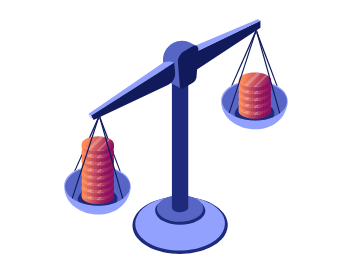Company Voluntary Arrangement
A Company Voluntary Arrangement (CVA) is a legal process that allows a company experiencing financial difficulty to come to an agreement with its unsecured creditors regarding the payment of the company’s debts.
A CVA can provide a way for a business to restructure its debt and continue trading while also addressing the needs of its creditors. In this comprehensive guide, we will cover the key aspects of Company Voluntary Arrangements, including the process, advantages and disadvantages, and what happens during and after a CVA.
What is a Company Voluntary Arrangement (CVA)?
A Company Voluntary Arrangement (CVA) is a legally binding agreement between a company and its creditors. It is designed to help businesses in financial difficulty to restructure company debts and return to profitability.
Under a CVA the company directors propose a repayment plan to its creditors outlining how much the business can afford to repay and over what period of time. The plan must be supported by at least 75% of company creditors voting in favour (with or without modification) in order to be approved.
Should the CVA be approved, the company makes regular payment contributions over an agreed period of time. Payments are based on the company's ability to pay, taking into account its income and expenses. It is essential that budgets and cash flow forecasts are prepared based on realistic assumptions for these purposes.
During a CVA, the company is safeguarded from potential legal action by its creditors and can continue to operate while it restructures. A licenced insolvency practitioner (IP) will oversee the process, ensuring that the terms of the plan are adhered to. Note that not all businesses meet eligibility requirements for this type of arrangement. The business must be currently or potentially insolvent with reasonable chances of becoming profitable again through utilization of a CVA.
Proceeding with a CVA can be beneficial for companies who are struggling financially, but it's essential to approach the situation cautiously and seek guidance from experts such as licensed insolvency practitioners prior to doing so. To determine if a CVA is right for you it's important that you understand both its potential advantages and drawbacks.
Who can propose a Company Voluntary Arrangement?
A Company Voluntary Arrangement (CVA) can only be proposed by the directors of the business. It cannot be proposed by creditors or shareholders although they will have a say in whether or not the CVA proposal is approved.
The company directors must first seek the advice of a licensed IP who will assess the company's financial position and advise on whether a CVA is a suitable option. This will involve analysis of the current financial position, projected budgets and cash flow forecasts.
The insolvency practitioner will work with the company directors to draft the CVA proposal which will be sent to creditors and shareholders. The proposal will provide full details of all assets and liabilities of the business and what is being offered to creditors and over what time frame.
A company should only put forward a proposal that is practical and has a high probability of being approved by creditors. If the IP does not consider the proposal to be fair, reasonable, or viable they will recommend an alternative course of action.
If your company is struggling to pay creditors and would like to discuss options including a Company Voluntary Arrangement, contact our team of insolvency experts at Company Doctor today on 0113 237 9503.
What is the process for a Company Voluntary Arrangement?
The CVA process typically involves the following steps:
- The Initial Assessment - The first step in the CVA process is to seek advice from an insolvency practitioner. They will conduct an initial assessment of your company's financial situation and determine whether a CVA is the most appropriate course of action for your company and its creditors. During this assessment, the insolvency practitioner will review your company's finances, assess your cash flow position, and examine your company's assets and liabilities.
- Appointing an IP to Draft the CVA - If the insolvency practitioner recommends a CVA and you decide to proceed with the process, the next step is to appoint the insolvency practitioner to draft the CVA proposal for you. The insolvency practitioner will work with your company's directors and stakeholders to create a detailed proposal that outlines how the company will repay its debts over a fixed period of time. The proposal will include details on the payment plan, creditor ranking, and any other terms and conditions.
- Directors consider the CVA draft proposal - After the insolvency practitioner has drafted the CVA proposal, it will be presented to your company's directors for review. The directors will examine the proposal and make any necessary revisions or amendments. If the directors feel that their company will not be able to adhere to the terms of the CVA, and a realistic draft cannot be devised, then the insolvency practitioner may recommend a creditors' voluntary liquidation instead. The insolvency practitioner must also be confident that the CVA has a realistic prospect of success in order to act as the nominee.
- The CVA is Filed with the Court - Once the CVA proposal has been finalized and approved by the directors, it is filed with the court, given a legal originating number, and then signed copies of the proposal are sent to all creditors. The CVA must be sent at least 3 weeks before the creditors' meeting is held. The filing of the CVA triggers a moratorium, which means that no legal action can be taken against the company during the CVA process.
- Creditors' and Shareholders' Meetings are Held - Once the CVA proposal has been drafted and reviewed by the company's directors, the IP convenes a meeting of all unsecured creditors. This meeting is typically held within three weeks of the CVA being filed with the court, and it is at this meeting that the proposal is presented to the creditors for their consideration. During the meeting, the IP will provide a detailed explanation of the proposed CVA, and creditors (or their representatives) are given the opportunity to ask questions or request revisions to the proposal. The meeting is also an opportunity for the creditors to vote on the proposal, and the appointed IP will oversee the voting process.
- Creditors and Shareholders Vote On Whether to Approve the Proposal - During the creditors' meeting, a vote is held on the CVA proposal. For the proposal to be approved, a 75% majority of unsecured creditors attending the meeting in person or by proxy must vote in favor of it. If modifications to the proposals are requested, the same rule of 75% majority approval applies. This stage of the process can be nerve-wracking for directors, as the success of the CVA depends on the approval of the creditors. However, with careful drafting of the CVA and effective communication with creditors leading up to the meeting, approval can usually be obtained. At the shareholders' meeting, at least 50% of shareholders must vote in favor of the proposal for it to be approved.
- Meeting Chairman Issues Report - If the proposal is approved at both the creditors' and shareholders' meetings, the chairman (the appointed IP) must issue a report to all the company's creditors and the court within four days of the meeting. The report provides an overview of what happened during the meeting, who was present, and how each party voted.
- Any Legal Actions Against Your Company are Stayed - Once the CVA is approved, any legal actions against the company are frozen, and no further actions can be taken unless the CVA is defaulted on. This provides the company with some breathing space to continue operating without the threat of legal action.
- Regular Contributions are Made to a Trust Account - Once the CVA is in effect, the company is expected to make regular contributions to a trust account, in accordance with the terms of the proposal. As long as the terms are adhered to and there is no default, the business can continue operating without the threat of being forced out of business. If the contributions are not met, the likely result will be either creditors' voluntary liquidation or compulsory liquidation. It is important for the company to keep track of its financial obligations under the CVA and to ensure that the required contributions are made on time.
How long does it take to get a Company Voluntary Arrangement approved?
The length of time it takes to get a CVA proposal approved can vary depending on the complexity of the proposal and the number of creditors involved. The process can take between 8-12 weeks on average from instruction of an IP to approval of the CVA proposal. The CVA will become effective immediately upon acceptance by the requisite majority of creditors and shareholders at their respective meetings.
What are the Advantages of a CVA?
There are several advantages to using a CVA to address a company's financial difficulties.
- A CVA provides a lifeline to a company that is insolvent and struggling to pay its debts. By negotiating a payment plan with creditors, the company can avoid liquidation and continue operating.
- Once a CVA is in place, creditors cannot take legal action against the company, giving it time to get back on its feet.
- A CVA allows a company to negotiate a payment plan that is more manageable than its current debt obligations, enabling it to repay its debts over a longer period of time.
- A CVA can reduce the pressure on a company's management team by providing a clear plan of action for addressing its debt issues.
- Unlike other debt management solutions such as administration or receivership, a CVA allows the company's directors to remain in control of the business.
- By working with creditors to negotiate a payment plan, a company can improve its relationships with them, potentially leading to better terms for future credit agreements. It is a good deal for creditors as they retain a customer and receive some of their debt back over time, usually between 30p and 100p in every £1 of debts, depending on what the company can afford to pay back.
- The agreement is binding on all creditors, including those who may not have voted in favour of it.
- The company can hive out the business to a new clean company, which can trade with customers and suppliers.
What are the disadvantages of a CVA?
There are also some potential disadvantages to using a CVA.
- The process can be time consuming and invasive as the IP will extensively investigate the company's affairs
- The credit rating of the business will be adversely impacted by entering into a CVA.
- Should the company fail to stick to the terms of the arrangement, the CVA could fail and the business may be forced into liquidation.
Do you know the difference between CVLs and CVAs? Read our article Difference Between a CVL and a CVA – What You Need to Know
How long does a Company Voluntary Arrangement last?
A CVA typically lasts for a fixed period of between two to five years, although the exact duration will depend on the terms of the agreement.
During this time, the company will be required to make regular payments into the scheme fund for the benefit of unsecured creditors as per the terms of the CVA proposals.
How much does a CVA cost?
The cost of a CVA can vary depending on the complexity of the case and the fees charged by the insolvency practitioner. However, costs of a CVA are generally lower than those of a formal insolvency procedure such as administration or liquidation.
The fees charged by the IP can include an initial assessment fee, proposal preparation fee and ongoing supervision fees. These fees will be paid from the company's funds which can be challenging if the business is already struggling with cash flow issues.
It is important for the company to consider the costs and benefits of a CVA carefully before deciding to proceed with the process.
Can you still trade during a Company Voluntary Arrangement?
It is important for the business to continue trading throughout the CVA in order to generate the required revenue needed to make payments to its unsecured creditors as set out in the proposal.
Directors must ensure that the position of creditors does not worsen. Additionally, the CVA may also require the company to lower costs and overheads to improve future profits. This could involve reducing staff numbers or renegotiating lease agreements.
The company's management will need to work closely with the insolvency practitioner to ensure that the terms of the CVA are being met and that the company is on track to achieve its targets.
What happens once the CVA ends?
Once the CVA comes to an end, the company will have fulfilled its obligations under the agreement, and any remaining debts will be written off. The company will no longer have to make any further payments to its creditors, and it will be free to continue trading without the burden of past debts.
However, it is important to note that a CVA may have a negative impact on the company's credit rating, as it is an admission of financial difficulty. This may make it more difficult for the company to obtain credit in the future, as lenders may view the company as a higher risk.
Additionally, if the company fails to meet the conditions of the CVA, or if it becomes insolvent during the term of the arrangement, the CVA may be terminated early, and the company may be forced into liquidation.
What happens if creditors reject the proposed Company Voluntary Arrangement?

If the proposed CVA is rejected, the company will need to explore alternative options to deal with its debts. This may include negotiating new payment terms with individual creditors, or entering into negotiations for an alternative form of insolvency procedure, such as administration or liquidation.
If the company decides to enter into administration, it will be placed under the control of an administrator, who will take over the running of the company and work to achieve the best possible outcome for the creditors. The administrator may look to restructure the business, sell it as a going concern, or liquidate the company's assets to repay the creditors.
Alternatively, the company may enter into liquidation, which involves selling the company's assets and using the proceeds to repay the creditors. In this case, the company will cease trading and will be wound up.
It is worth noting that if the company is facing financial difficulty, and the proposed CVA is rejected, it may be difficult for the company to continue trading. This may result in the closure of the business, and the loss of jobs for employees.
How does a CVA affect employees?
A CVA can have an impact on employees because the terms of the arrangement may require that the company needs to cut costs which could mean the company has to make redundancies or restructure. However, a CVA is designed to help the business return to profitability, which should ultimately benefit most employees by securing their jobs both during and after the arrangement ends.
It's important to note that a CVA cannot be used to avoid paying employees their entitlements, such as redundancy pay or notice pay.
How does a CVA affect directors and shareholders?
Directors and shareholders can both benefit from a CVA if it steers the company back towards financial success, yet to do so they must make sacrifices. This could include making contributions towards the agreement or settling for reduced dividends in order for creditors to approve the arrangement.
It's important for directors and shareholders to understand that they have a duty to act in the best interests of the company and its creditors and not just their own interests.
Need Help or Advice?
Here at Company Doctor, we have our own licenced insolvency practitioner and a team of insolvency experts with decades of experience. If you are the director of a business that is struggling to pay its debts and want to discuss your liquidation options, please complete the web form or call us today on 0113 237 9503 or on freephone 0800 169 1536.
References
The primary sources for this article are listed below.
https://www.gov.uk/company-voluntary-arrangements
Details of our standards for producing accurate, unbiased content can be found in our editorial policy here.
Get Help
For immediate FREE advice and guidance contact us via this online form to find out how we can help your business.
FAQs
A Company Voluntary Arrangement (CVA) is a legally binding agreement between a company and its creditors. It is designed to help businesses in financial difficulty to restructure company debts and return to profitability.
A Company Voluntary Arrangement (CVA) can only be proposed by the directors of the business. It cannot be proposed by creditors or shareholders although they will have a say in whether or not the CVA proposal is approved.
The CVA process typically involves the following steps:
- The Initial Assessment
- Appointing an IP to Draft the CVA
- Directors consider the CVA draft proposal
- The CVA is Filed with the Court
- Creditors' and Shareholders' Meetings are Held
- Creditors and Shareholders Vote On Whether to Approve the Proposal
- Meeting Chairman Issues Report
- Any Legal Actions Against Your Company are Stayed
- Regular Contributions are Made to a Trust Account
The length of time it takes to get a CVA proposal approved can vary depending on the complexity of the proposal and the number of creditors involved. The process can take between 8-12 weeks on average from instruction of an IP to approval of the CVA proposal.
The cost of a CVA can vary depending on the complexity of the case and the fees charged by the insolvency practitioner. However, costs of a CVA are generally lower than those of a formal insolvency procedure such as administration or liquidation.
Further Reading on Voluntary Arrangements and Liquidation
Our Services

Company Liquidation
Our licensed insolvency practitioners will guide you to the right solution, whatever your financial situation may be.

Cant Repay Bounce Back Loan or CBILS
Contact us for advice if you are unable to repay funding received, including Furlough, CBILS, CLBILS, BBLS and (SEISS).

Company Dissolution
Company dissolution (striking off), is the process of shutting down a limited company.

Winding Up Petitions
We can help if your business may be put into compulsory liquidation, or you have received a winding up petition.

Time To Pay Arrangement
We can find the best solutions and negotiate Time To Pay Arrangements on your behalf.

Directors Redundancy Claims
Did you know that many company directors are entitled to redundancy payments if the company is liquidated?
What Our Customers Are Saying

